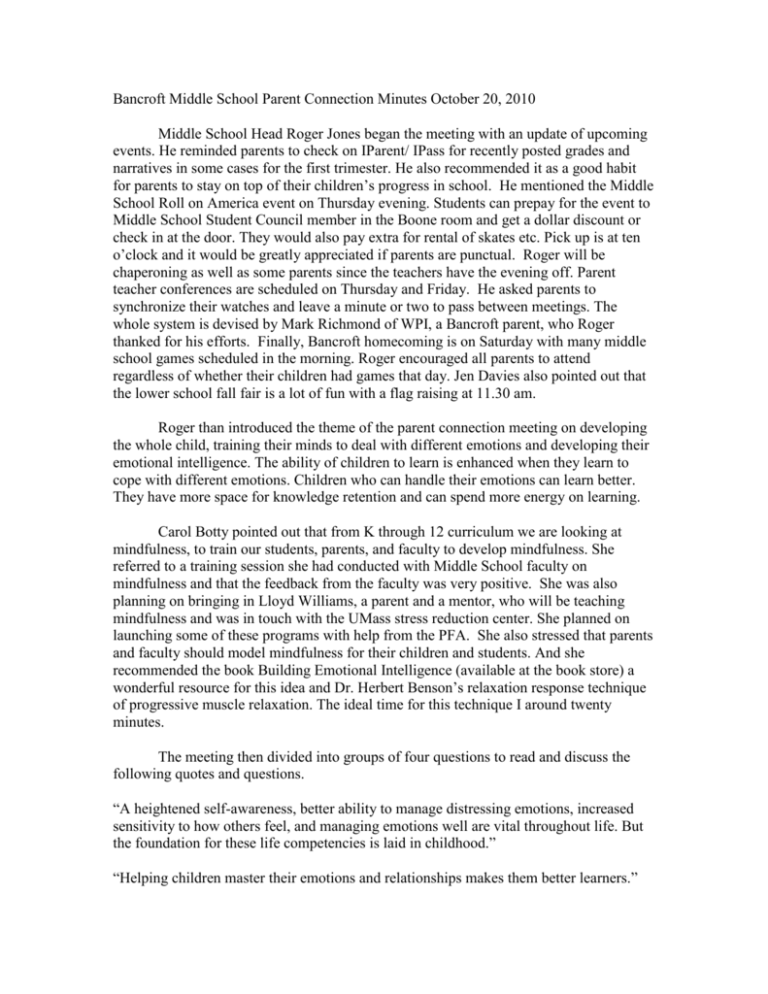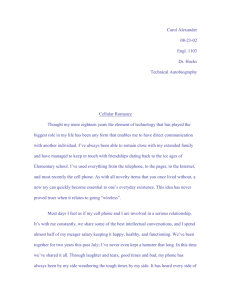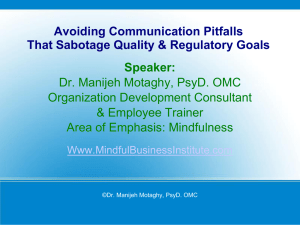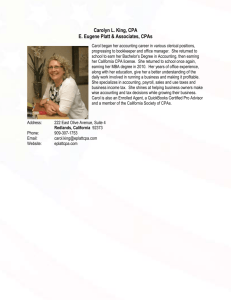Bancroft Middle School Parent Connection Minutes October 20
advertisement

Bancroft Middle School Parent Connection Minutes October 20, 2010 Middle School Head Roger Jones began the meeting with an update of upcoming events. He reminded parents to check on IParent/ IPass for recently posted grades and narratives in some cases for the first trimester. He also recommended it as a good habit for parents to stay on top of their children’s progress in school. He mentioned the Middle School Roll on America event on Thursday evening. Students can prepay for the event to Middle School Student Council member in the Boone room and get a dollar discount or check in at the door. They would also pay extra for rental of skates etc. Pick up is at ten o’clock and it would be greatly appreciated if parents are punctual. Roger will be chaperoning as well as some parents since the teachers have the evening off. Parent teacher conferences are scheduled on Thursday and Friday. He asked parents to synchronize their watches and leave a minute or two to pass between meetings. The whole system is devised by Mark Richmond of WPI, a Bancroft parent, who Roger thanked for his efforts. Finally, Bancroft homecoming is on Saturday with many middle school games scheduled in the morning. Roger encouraged all parents to attend regardless of whether their children had games that day. Jen Davies also pointed out that the lower school fall fair is a lot of fun with a flag raising at 11.30 am. Roger than introduced the theme of the parent connection meeting on developing the whole child, training their minds to deal with different emotions and developing their emotional intelligence. The ability of children to learn is enhanced when they learn to cope with different emotions. Children who can handle their emotions can learn better. They have more space for knowledge retention and can spend more energy on learning. Carol Botty pointed out that from K through 12 curriculum we are looking at mindfulness, to train our students, parents, and faculty to develop mindfulness. She referred to a training session she had conducted with Middle School faculty on mindfulness and that the feedback from the faculty was very positive. She was also planning on bringing in Lloyd Williams, a parent and a mentor, who will be teaching mindfulness and was in touch with the UMass stress reduction center. She planned on launching some of these programs with help from the PFA. She also stressed that parents and faculty should model mindfulness for their children and students. And she recommended the book Building Emotional Intelligence (available at the book store) a wonderful resource for this idea and Dr. Herbert Benson’s relaxation response technique of progressive muscle relaxation. The ideal time for this technique I around twenty minutes. The meeting then divided into groups of four questions to read and discuss the following quotes and questions. “A heightened self-awareness, better ability to manage distressing emotions, increased sensitivity to how others feel, and managing emotions well are vital throughout life. But the foundation for these life competencies is laid in childhood.” “Helping children master their emotions and relationships makes them better learners.” “It is important to be as committed to the development of your own inner life as you are to your child’s inner life.” 2. What are your stress points? 3. How does stress manifest itself in your body? 4. How do you relieve stress in your life? What are your bag of tricks? 5. How are stress levels different for our children than they were for us? When the group got back together we compared answers. Some stress points mentioned was traffic related stress such as tail gating, road rage etc. Others mentioned being overwhelmed, with too many things to do and too little time. Empathetic stress, taking on the problems of others, especially that of our children, and feeling guilty about setting boundaries was another source according to Jen Davies. Carol Botty suggested creating distance to overcome this, a tactic used by counselors and administrators. It is important that one witnesses and get completely involved. She mentioned that this was the case with first responders who sometimes abused alcohol to manage such stress. There are also gender differences on how we handle stress though that was getting blurred. Family illness and health issues were another source of stress mentioned. Carol Botty recommended some strategies for students to release stress, especially emotional stress. Students who feel they have no friends and get stressed and isolated. Social stress affects students and they have to learn to let go and remove all distressing and negative feelings. Rather than withdraw, they should channel positive energy by smiling and making eye contact. And then compare the response of the people around them with when they are being negative. Positive energy is contagious and students should learn to let go or surrender feelings that make them angry and depressed. Boys like to flush, shoot it or blow it up, girls could write their feelings, put it in a box or throw it out of a window. Maintaining a journal can also be helpful. Carol also pointed to the connection between mind and body and think about paying attention to the body and how stress is manifested in it. Stress can lead to headaches and other physical manifestations. Carol also recommended teaching our children how to deal with illness and death. Talking and sharing feelings with them teaches resiliency and allows them to child to deal with events that cannot be changed. A parent recommended physical touching of ill friends as way of healing. Even with middle schoolers who may shy from sharing feelings with parents, Carol recommended “keeping an open heart” and letting them know you are always there for them. Carol then discussed Dr Herbert Benson’s (a cardiologist who studied the effects of relaxation on healing) basic techniques of relaxation response. She distributed a flyer with his technique. Starting with taking a deep diaphragm breath, that is deep breathing from the belly. One could do this in bed at night before sleeping, breathe through the belly rather than through the lungs, put something on your stomach and see it rise. Other relaxation techniques included massaging your thumb, paying attention to your body, focus and tap the tips of their fingers, work and massage your fee as the Chinese do--pay attention to areas that you gravitate to, is the one way your physical stress is manifested and relieved. Dr Benson’s relaxation response is a way to breathe and meditate, concentrating on a mantra like one, “om” or any other peaceful word and concept. Do this in a quiet, comfortable, breathing through your nose for at least 20 minutes, even ten minutes. Roger concluded the meeting by reminding parents to model mindfulness and emotional calm for children, who are perceptive and absorb our stress. Submitted By Manisha Sinha, 8th Grade PFA Rep






